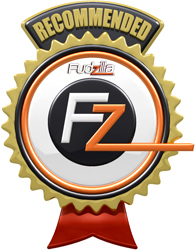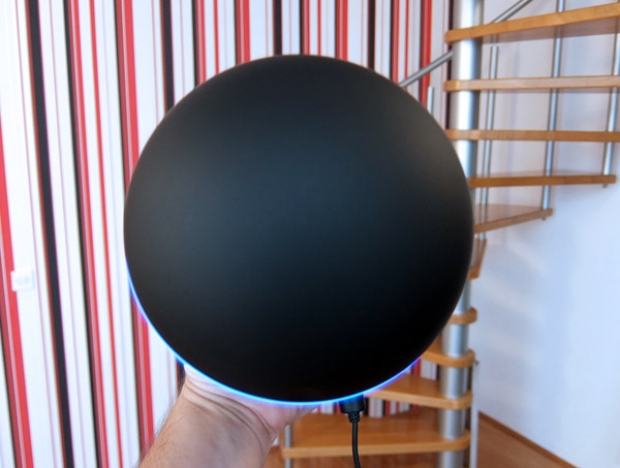Index

Review: DIY makes perfect sense, Plus SKU not so much
Zotac has been in the nettop and mini-PC space for more than four years now and it has managed to carve out a nice niche for itself. From humble beginnings, i.e. cheap Atom- and Brazos-powered nettops, Zotac’s ZBOX line has expanded to include more serious mini-PCs with gaming credentials, ultra-small Pico boxes, passively cooled designs and stylish models like the Sphere.
If you are in the market for a spherical PC, then the Zotac ZBOX Sphere OI520 is the one to go for – namely because it is the only one out there. The minimalistic Sphere offers a truly unique design and is bound to turn heads and start conversations. But is it just a triumph of style over substance, all too common in the tech industry today? That’s up to you to decide, so here are some facts.
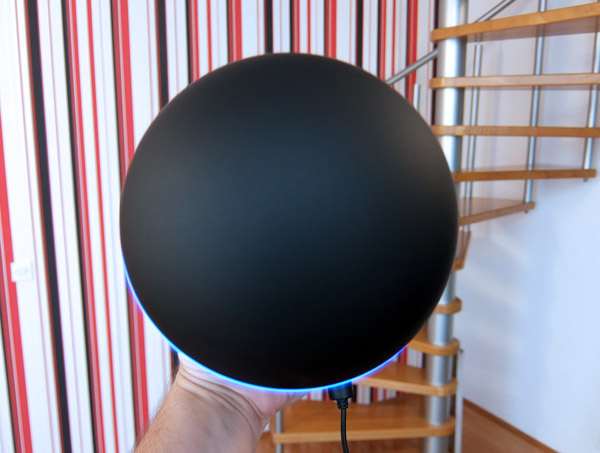
Let's play ball!
The Sphere is based on the Intel Core i5-4200U processor, arguably the most prolific Haswell U-series part on the market. It’s a hyperthreaded dual-core clocked at 1.6GHz, but it can hit 2.6GHz on Turbo, all in a cool 15W TDP envelope. The Core i5-4200U features Intel HD 4400 graphics, clocked between 200MHz and 1000MHz. The Sphere features four USB 3.0 ports, three USB 2.0 ports, Intel Dual Band Wireless-AC 3160 801.22ac and Bluetooth 4.0. HDMI and DisplayPort are on board and the Sphere is 4K compatible.
The Plus version ships with a single 4GB PC3-12800 SO-DIMM module, courtesy of Crucial, as well as a Samsung branded 500GB 5400rpm hard drive, which is actually a rebadged Seagate Momentus-B drive. The average Fudzilla reader (i.e. enthusiast) is bound to spot a couple of issues – the use of a single memory module on a dual-channel platform, as well as a sluggish hard drive.
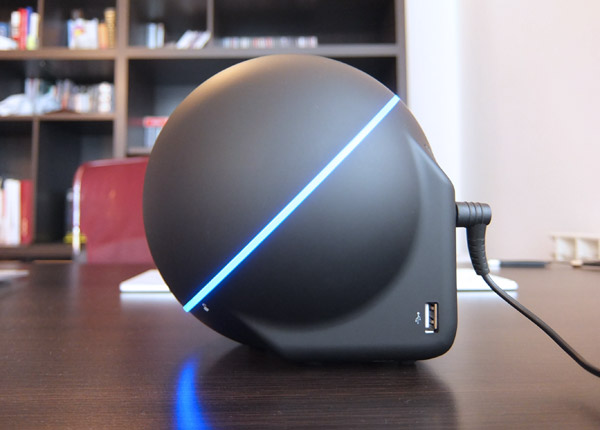
The Sphere rests on five relatively large rubber feet
Luckily the Sphere can accommodate two SO-DIMM modules and in addition to the 2.5-inch bay, there’s also a 6Gbps mSATA slot on board. So we went ahead and did what most of our readers would do – we added an mSATA solid state drive and swapped out the single memory module for a 2x4GB Kingston HyperX DDR3L kit.
Was it worth it? Well of course it was, otherwise we wouldn’t have bothered, but we'll get to that later.
Aesthetics and Build Quality
When it comes to the ZBOX series, one of our biggest complaints was the lack of a comprehensive redesign over the past four years. While there were a number of tweaks and new form factors, the basic design language did not change until the Sphere came along. So, instead of small, incremental redesigns each year, Zotac decided to make up for four years of lethargy and predictable designs with something completely different, a radical redesign. Some may argue it went too far, but personally I don’t think so.
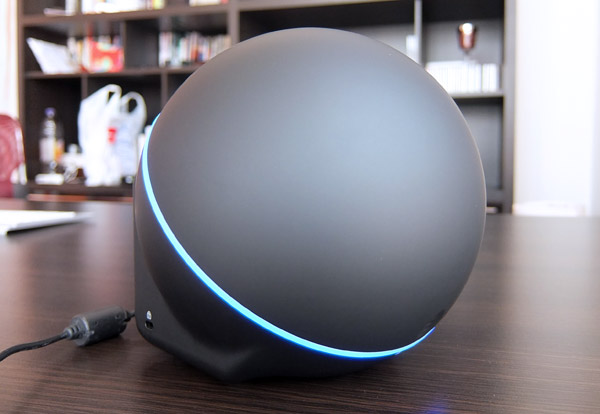
Kensington in lower left corner, note the alignment indentation at the front
The basic design is ballsy in more ways than one, pardon the pun. As its name suggests, the Sphere is an almost perfect 154mm diameter sphere, with small cut-outs at the back. The overall dimensions, with the chamfered box stand, are 154x154x161mm and the whole contraption weighs just 780g, less than an average 10-inch convertible tablet with a keyboard dock.
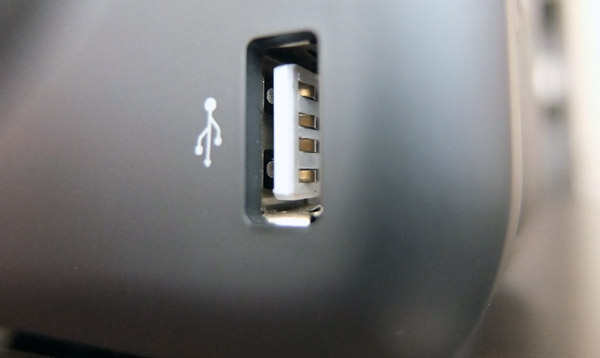
Lone USB 2.0, right hand side
However, there is a price to pay for the minimal design, as all the ports are located at the back, apart from a lone USB 2.0 port on the right side. Most users probably won’t mind, although a USB 3.0 on the side would have been preferable.
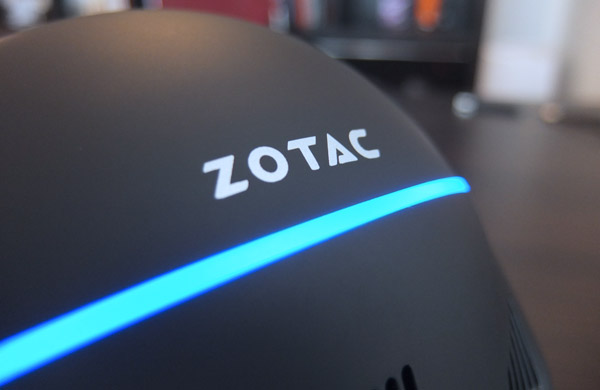
We're just showing off here
Zotac used PC+ABS plastic with a smooth, matte finish. Matte black is a good match for most offices sand living rooms, but we would really like to see a white option. It would make the Sphere stand out even more and attract more consumers, or at least help some of them justify the purchase to their significant other. On the other hand, a white version could be an invitation to a lawsuit from Pixar.
The top can be removed with no tools – just twist it off counter-clockwise and that’s it. The Sphere looks pretty good even with the top off, like something you'd expect to see inside a Borg cube.
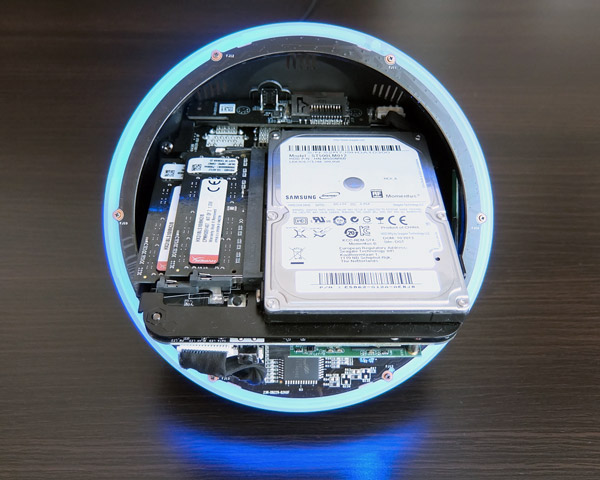
Despite the volume, the components are tightly packed
The cover is about 2mm thick, which makes it relatively sturdy for a desktop. The top rests on a translucent ring, lit up by a PCB housing an array of blue LEDs, giving the Sphere a space-age orb look, with a glowing equator so to speak.
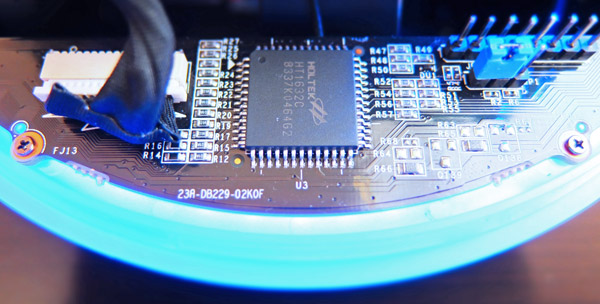
The circular LED PCB is huge
The light show is controlled by a Holtek chip, which rests at the bottom of the round LED PCB.
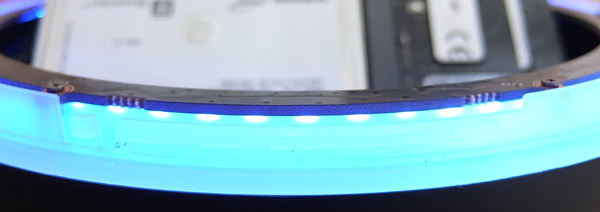
Section of LED array exposed at the top
A peek under the bonnet
Although some reviewers complained that the hemispheric bonnet is flimsy and easy to break, this is a desktop and it’s not like someone will play ball with it around the office, or hit it with a brick. Then again, some reviewers whined about the lack of expansion options, but anyone who complains about a ‘lack of expansion options’ on a tiny mini-PC really has no place reviewing hardware to begin with.
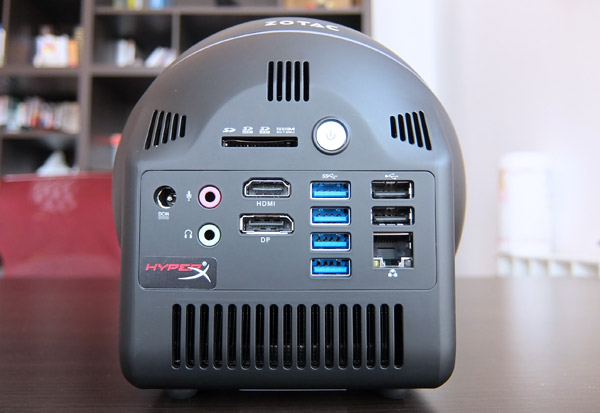
Aside from legacy DVI and VGA connectors, everyt standard is accounted for
Actually, as far as sane people go, the ZBOX Sphere features plenty of expansion options for its form factor – an abundance of USB 3.0 ports, two SO-DIMM slots, and an mSATA slot along with a standard 2.5-inch bay.
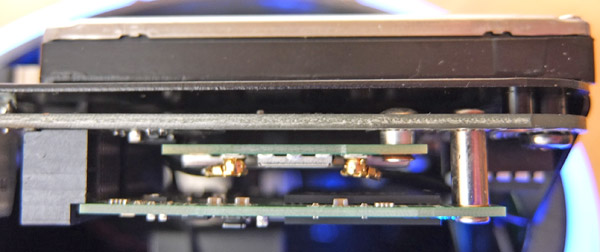
Top to bottom: 2.5-inch drive mount, motherboard, Intel wireless, mSATA drive
At first glance it looks like the bay could accommodate any drive regardless of height, but looks are deceiving – it’s a tight for the preinstalled 9.5mm drive. While it’s a minor issue, it prevents the use of many old hard drives (e.g. obsolete USB 2.0 external drives), or even some current models, such as high-capacity 2TB drives (yes, Toshiba still does 15mm drives).
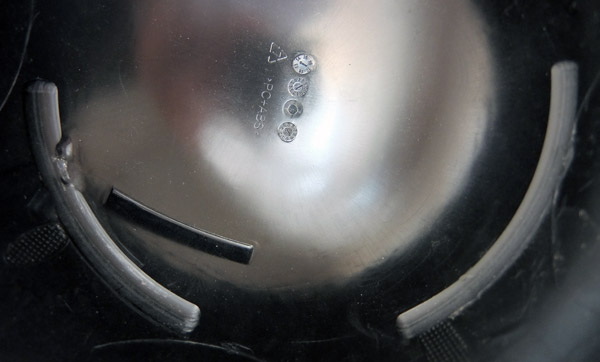
Note the machined grooves on either side of the shroud - they barely miss the 2.5-in 9.5mm drive and motherboard, there is no room for bigger drives
The wireless card can be swapped out, although we don't see why anyone would need to upgrade it, and there's an SDXC card reader at the back. So, in terms of upgradeability, the Sphere actually scores a bit better than the average mini-PC.
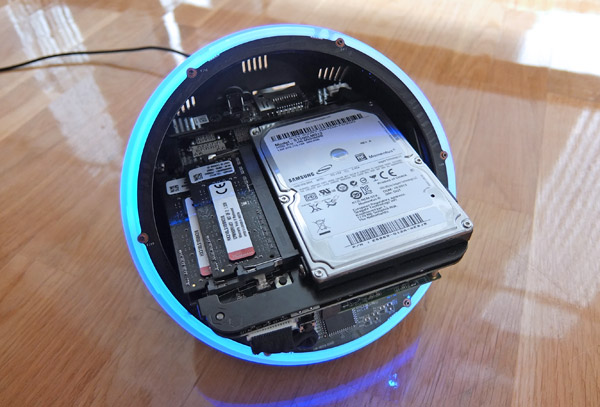
HDD screw in lower left corner, next to the SO-DIMM slots
The tiny PCB is slightly angled down toward the front, but all replaceable components are easily accessible. You just need a screwdriver to release the 2.5-inch drive, but everything else is tool-free. Due to the specific layout, the wiring (flat cable and wifi) doesn’t leave a very good impression, so it is necessary to exercise caution while tinkering with the insides, otherwise you could damage one of the cables.

The fan is practically inaudible in most situations
As far as cooling and noise are concerned, we are pleased to report that Zotac did an exceptional job. Previous ZBOX models were relatively quiet, too, which wasn’t the case with many nettops, including some from much bigger brands.
The 15W CPU is covered by a slim heatsink and heat is transferred through a single heatpipe, which curves down to the bottom, where heat is quietly dissipated. The fan is located at the bottom of the chassis and the main exhaust is at the back, underneath the IO panel.
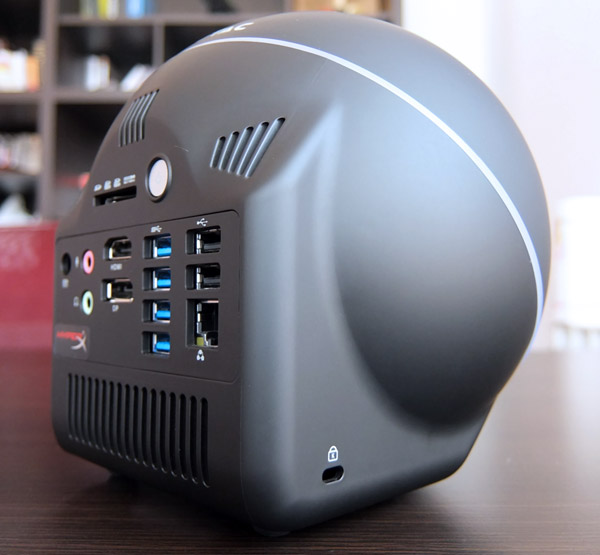
Most of the heat is transferred to the bottom via the heatpipe, which is where the main exhaust is located
However, the voluminous design also allows airflow around the PCB, which cools components at the top of the board – the memory modules, 2.5-inch drive and mSATA drive. Air is then removed via three small vents above the PCB and IO panel.
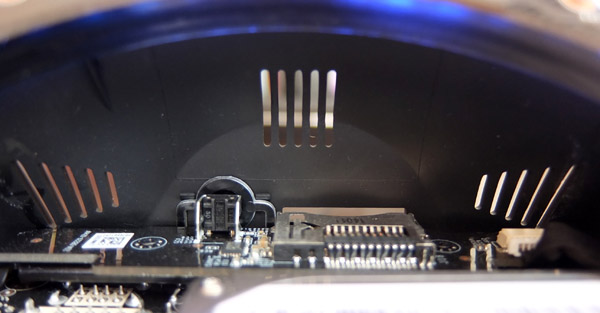
Three small vents at the top
The end result is impressive. This is the quietest ZBOX we had a chance to test, although we did not get a chance to test one of Zotac’s passive models yet.
Zotac Sphere barebones build
Since Zotac OI520 Plus reviews went live months ago, we decided to take the road less travelled and treat the review sample as a barebones box, well, a barebones sphere in this case. We saw no point in doing just another review of a Plus unit with the stock configuration, so we wanted to check out how it would do with two memory modules and an mSATA system drive.
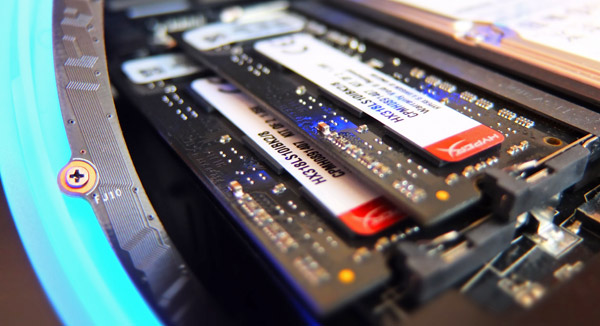
2Chan/b/ - two sticks of speedy Kingston HyperX memory
Kingston provided us with a speedy HyperX Impact Black DDR3L 8GB kit (4GBx2). Granted, this 1866MHz (PC3L-14900S) memory kit is overkill for this type of machine, as it would feel at home in much pricier gaming laptops, but we are not showing off – we are simply trying to prove a point.
The Crucial stock memory used in the Plus model is good enough, but you get just one module. It’s a trade-off, Zotac could have used a kit, which would increase the price and limit upgradeability, but instead it used a single module, leaving the second slot free for future upgrades, saving a couple of bucks at the cost of a performance penalty.
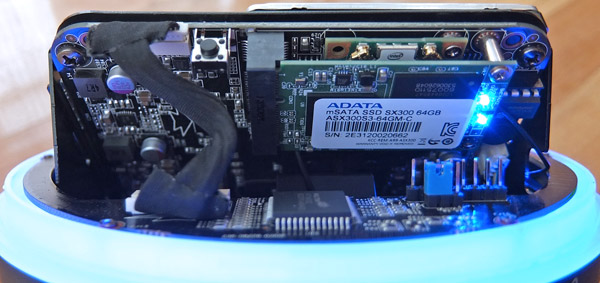
2012 vintage ADATA mSATA drive
We also got a cheap 64GB mSATA SSD to act as the system drive. After some consideration, we found that ADATA’s relatively old XPG SX300 drive ticked all the right boxes – it’s cheap, yet delivers 550MB/s read and 485MB/s write performance, with 25k/65k read/write IOPS. The unit is based on the SandForce SF-2281 controller and despite its age the drive still delivers solid performance.
So what sort of performance gain did we get with the added hardware?
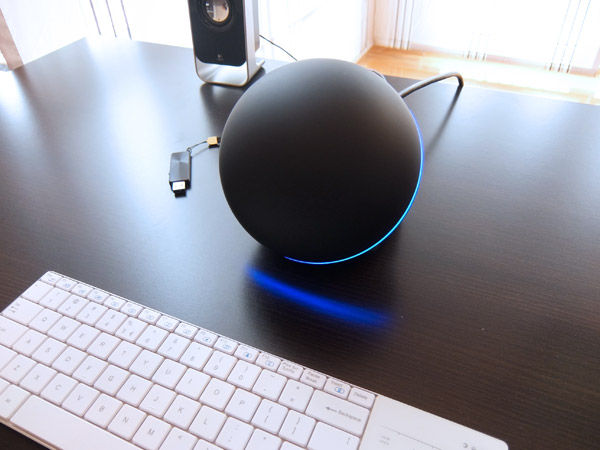
Swanky, innit?
The tweaks made quite a difference in most benchmarks, but the subjective impression was even better. Even with a relatively old SSD, the system boots in mere seconds, wakes up instantly and is more responsive in every situation. The increased amount of memory and the slightly higher clock may not make a huge difference given the intended role of the system, but dual-channel memory can have a big impact on iGPU performance, so let's start there.
Zotac Sphere OI520 Plus vs. barebones GPU performance
We did not have enough time to run comprehensive gaming tests – after all this is not a gaming rig, but based on external sources and tests, HD 4400 performance can be boosted by 20-30% percent simply by adding another stick of RAM.
The gains depend on the memory speed, latency, screen resolution and of course the choice of game engine. As far as synthetic tests go, in 3DMark Fire Strike the stock Plus version with single-channel 4GB 1600MHz RAM scores 538, but with two sticks of 1866MHz memory we got 633, which translates into a 17.5% gain. In proper games you are likely to get even more.
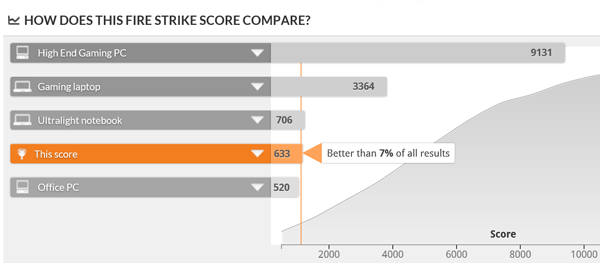
Still nowhere near discrete GPUs, but on a par with office rigs and most notebooks
It may not sound like much, after all this is still an integrated GPU, but it’s a big gain that can make the difference between playable and unplayable framerates. In case you plan to use the Sphere for some casual gaming – go for a dual-channel setup.
As far as real games go, we found a dusty copy of Call of Duty: MW2 and got playable framerates at 720p, with 2xAA and relatively high detail settings.
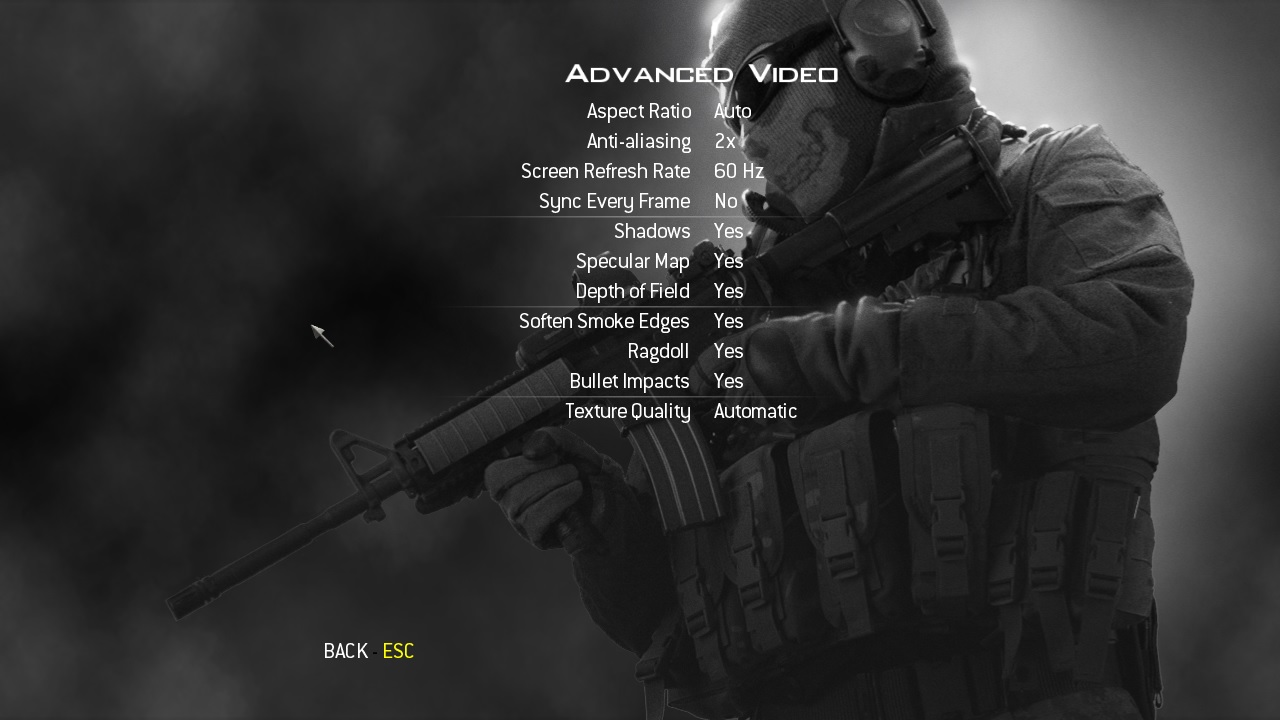
The Sphere should have no problem dealing with many older titles at 720p, or even 1080p depending on the genre.
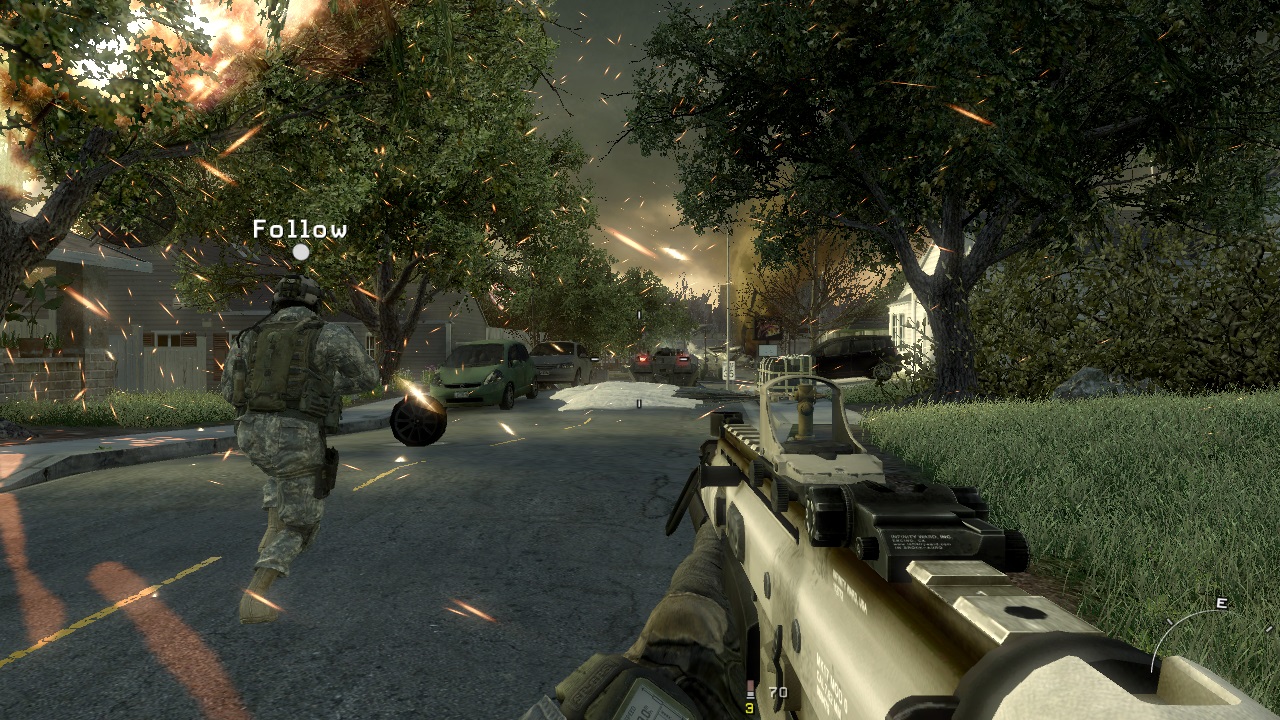
Playable, but not very smooth depending on the level of action
There are a couple of things to consider. Intel's IGPs are no longer the dreary affairs they used to be and the HD 4400 (GT2) is not even close to being the fastest Intel IGP out there, as it sports just 20 execution units. AMD's latest IGPs are of course better and we prefer them over Intel solutions, but there is a catch – most reviewers tend to run the latest games even on underpowered IGPs, so AMD's VLIW4 and GCN cores fare much better, due to superior architecture and driver support. The gap closes in older titles, the ones you are more likely to be able to run on IGPs, hence AMD's seemingly big 'benchmarketing' advantage melts away in many real life situations.
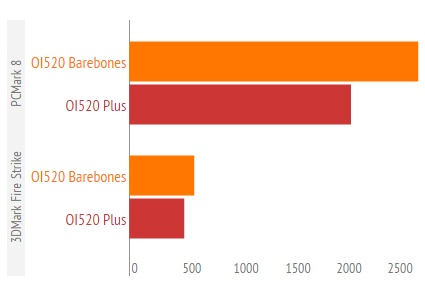
The HD 4400 is no slouch and the Sphere is 4K/UHD capable, making it quite a bit more future-proof. Prices of 4K TVs are tumbling and any serious media PC in 2015 simply has to support 4K. Remember that dual-band radio? It should come in handy for video streaming and could even be used for in-home game streaming. Launch a game on your big rig and enjoy it on your big screen, courtesy of Steam.
Streaming offers another use case for living room PCs. If only more vendors supported hardware-agnostic streaming (yes, we're looking at you Nvidia).
Overall Sphere barebones vs. Plus performance
Now let's take a look at overall performance, boosted by solid state storage and of course dual-channel memory.
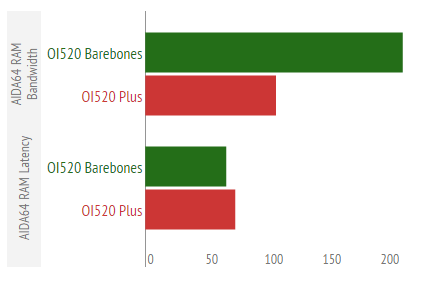
As far as memory performance goes, our barebones Sphere wipes the floor with the stock OI 520 Plus in AIDA64. The Plus version scores 12,189 MB/s in the memory bandwidth test, with a latency of 77.1ns. The barebones Sphere scored 22,063 MB/s and 69.3ns. The effect of dual-channel memory on CPU performance is not as evident as in GPU tests, but you are still looking at some minor improvements, usually on the order of 5% in CPU-bound applications.
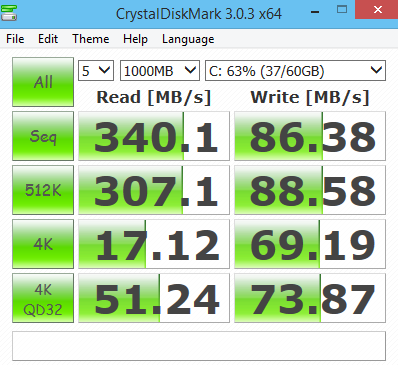
The biggest boost in overall performance comes from faster storage, not memory. Although we used a dirt cheap SSD launched in 2012, the storage test ended up looking like a confrontation between a Zumwalt-class destroyer and a Somali pirate dinghy. However, the old ADATA drive is all over the place in terms of bench results, as you can see in the screenshots.
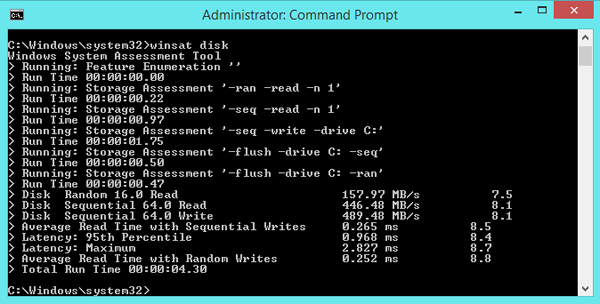
The simple (and relatively useless) winsat disk check hits the paper spec spot on, but the more realistic HD Tune and Crystal fall short
Bear in mind that this is a relatively dated model and if you are willing to invest in a current generation SSD, the performance gap is bound to be even wider.
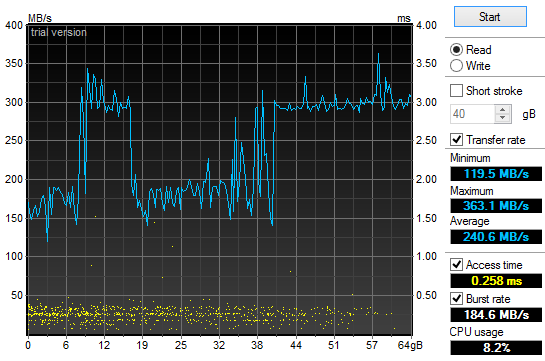
An HDD is simply not a good match for a Core i5 Haswell, even in ULV flavour, as it bottlenecks performance.
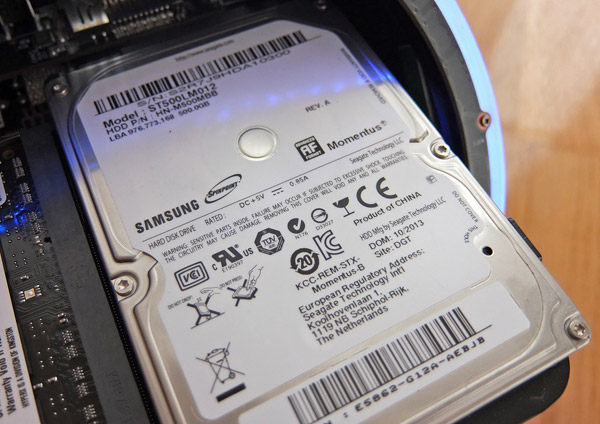
Although it's a bottleneck, the HDD offers solid performance - but the rest of the system is just too fast
If we were dealing with a Bay Trail or Kabini nettop, adding a speedy SSD would still make a difference, but a much smaller difference, as the CPU would eventually end up bottlenecking the system. Using an HDD on such low-end systems is still justifiable, but it really doesn't make much sense on a Core i5 system.

The 500GB HDD is not slow, but even the moody ADATA SSD leaves it in the dust
The OI520 Plus scores 2161 in PCMark 8 (Home), but our barebones OI520 hit 2817. That's a 30% boost in one of the most popular and accurate general performance benchmarks out there.
Actually, overall performance is so good that Zotac may have a bit of a marketing problem on its hands – many consumers associate mini-PCs with underpowered nettops, but configurations like the Sphere OI520, Gigabyte Brix Pro or high-end Intel NUC models are powerful enough to serve as the primary PC in most homes and offices. The Sphere also looks the part.
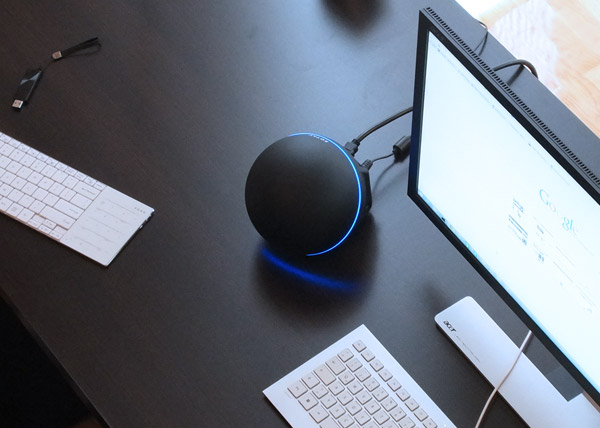
The OI520 is fast enough for the vast majority of office users, regardless of storage configuration
Perhaps it is time for Zotac to start offering a new tier of ZBOX Plus models based on 'big core' CPUs, with dual-channel memory and fast solid state storage? George Orwell would probably brand them DoublePlusGood.
As far as the whole barebones idea is concerned, our only complaint is the 2.5-inch bay. With so much volume to go around, designers could have found a few extra millimetres to accommodate even 15mm drives, allowing users to reuse old drives or install a 2TB 15mm drive. In theory, there is enough room to fit two 2.5-inch bays, but this would inevitably make the design costlier and more difficult to cool and assemble. However, it would be a boon for DIY lovers keen to reuse old 2.5-inch SSDs and HDDs. But that's just nitcpicking – even the 2.5-inch/mSATA combo is better than what you’d get on most mini-PCs.
Thermals, power consumption, noise
The Zotac OI520 is a cool customer, which is no surprise thanks to the 22nm Haswell processor with a 15W TDP. Under prolonged full load, the CPU temperature can hit 60-65 degrees Celsius, but that’s really not a realistic scenario, since very few people will run demanding applications or games on such a system.
The Core i5-4200U is relatively powerful and doesn’t have to break a sweat in everyday tasks such as browsing, office applications and media consumption. In that case the CPU temperature will usually hovers in the 35-40 degree range, depending on ambient temperature, which is excellent. Unlike underpowered Atoms, Celerons and low-end AMD APUs, the Core i5 simply doesn’t have to work hard most of the time, resulting in less heat, less noise and practically no throttling.
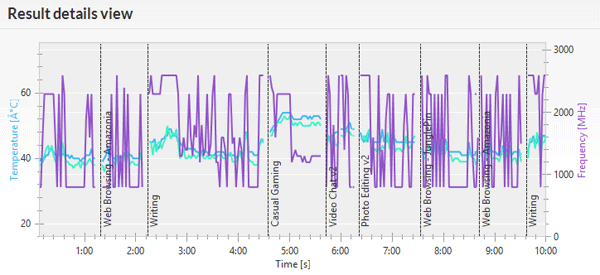
PCMark 8 indicates the Core i5 does not have to work hard and operate on peak Turbo clocks too often
This also reflects on the power consumption – it’s extremely low and shouldn’t go over 30W under load, staying south of the 9W mark when idling. It can go up by a couple of watts if you add more hardware or use one of the four USB 3.0 ports for an external hard drive, but that’s about it. The Sphere needs as much power as a cheap two-bulb lamp from IKEA.
We already pointed out that this is the quietest actively cooled ZBOX PC we ever tested. Thanks to its relatively large volume and shape, the Sphere acts as a muffler. In normal use it is practically inaudible and even under full load it’s difficult to hear the fan, even in a quiet room. Unfortunately we had no access to professional grade audio equipment, but a few basic tests revealed that idle noise ranges from 31-33db. Better yet, it barely goes up under load, staying under 35db at all times. Many small systems quickly leap from 30db to 40+db under load.
Conclusion
We can easily recommend the ZBOX OI520 Sphere, not just because it has a quirky design, but because it’s has the brains to go along with the neat looks.
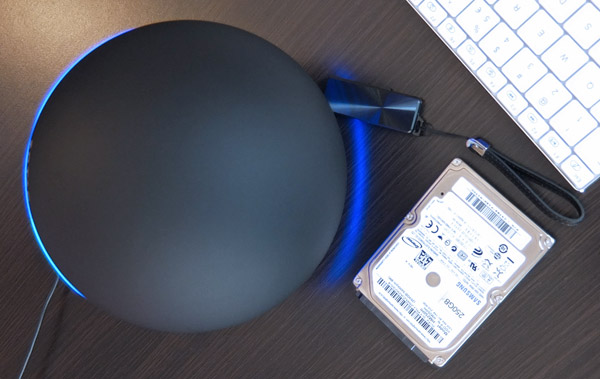
Just a size comparison - the Sphere is more compact that it may seem at first glance
In terms of value, most small form factor PCs tend to carry a premium and the Sphere is no exception – the barebones SKU costs around €350 in Euroland, while the Plus version goes for €440 in the DACH market. In the US, Newegg lists the barebones OI520 at $389. It’s no more expensive than comparable models from other vendors, so it’s just a matter of perspective. To some extent, the mini-PC premium is offset by lower power consumption and the knowledge that you’re making a family of polar bears happy. If you need an 'always-on system', or an small office system, the reduction in power consumption could be significant – a couple of dozen watts versus a standard desktop every hour does is not pocket change over the course of a PC's lifecycle.
The frugal Core i5-4200U processor delivers good all-round performance and the integrated HD 4400, backed by dual-channel memory, should suffice for casual gaming, older titles or undemanding genres. Zotac has a habit of spicing up ZBOX designs with loads of connectivity options and the Sphere is no exception. Thanks to 802.11ac wireless and Bluetooth 4.0, it’s a good streaming platform, and let’s not forget 4K support and four USB 3.0 ports. None of these standards are likely to become outdated for years to come.
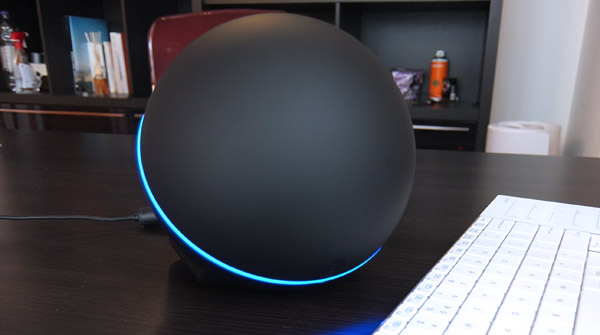
Bottom line, the Sphere is a well-designed, future-proof PC and we feel the barebones SKU is a somewhat better choice. The Plus versions ships sans OS anyway and you’re better off getting two sticks of RAM and a cheap mSATA drive instead. If you happen to have an old 2.5-inch hard drive, even better, as long as it’s not a 12.5mm or 15mm unit.
Oh, and Zotac – please make a white version next time around.
